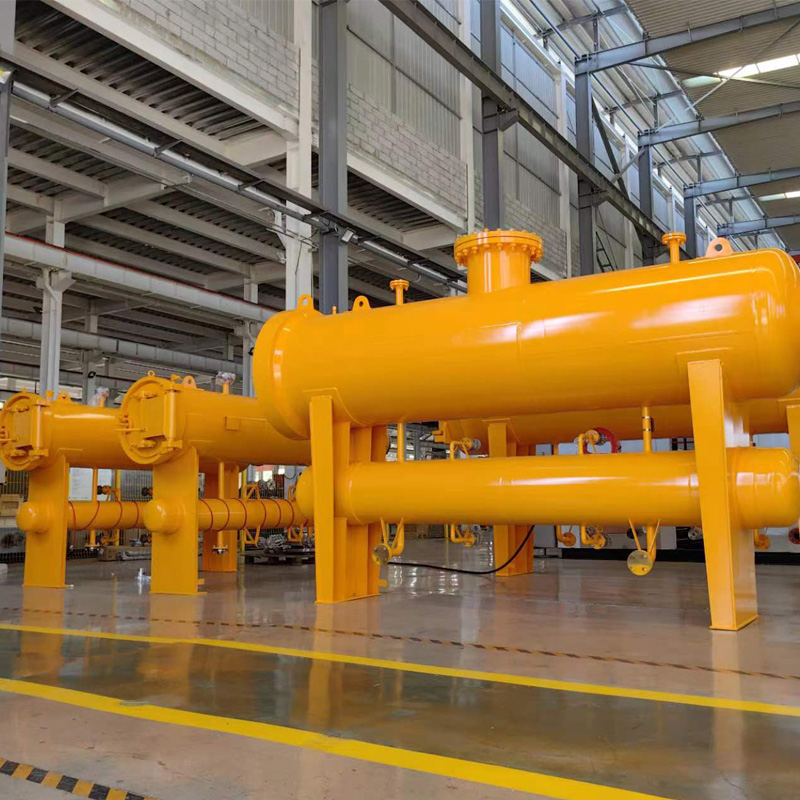
Dec . 04, 2024 18:24
Back to list
pressure vessel
Understanding Pressure Vessels Design, Safety, and Applications
Pressure vessels are an essential component in a variety of industrial applications, ranging from oil and gas extraction to the chemical industry, and even in nuclear power generation. These sturdy containers are designed to hold gases or liquids at pressures significantly different from the ambient pressure. The integrity and safety of pressure vessels are paramount, as any failure can lead to catastrophic consequences, including explosions and toxic leaks.
Design and Construction
The design of a pressure vessel must account for the type of contents it will hold, the pressures it will operate under, and the environmental conditions it will face. The construction material is crucial; common materials include carbon steel, stainless steel, and various alloys, chosen based on their strength, corrosion resistance, and cost-effectiveness. Advanced composite materials are also being explored for some applications, especially where weight is a concern.
Various codes and standards guide the design and construction of pressure vessels. One of the most recognized standards is set by the American Society of Mechanical Engineers (ASME), specifically the ASME Boiler and Pressure Vessel Code (BPVC). This code outlines the minimum requirements for design, fabrication, inspection, and testing, ensuring the safe operation of pressure vessels.
Safety Considerations
Given the high stakes involved in operating pressure vessels, safety must be prioritized throughout their lifecycle. This involves not only robust design and construction practices but also ongoing maintenance and inspection. Regular checks for corrosion, structural integrity, and equipment reliability are essential to prevent failures.
Pressure relief devices, such as safety valves, are a critical safety feature. These devices are designed to release excess pressure automatically, preventing the vessel from exceeding its design limits. The failure to operate correctly can result in dangerous situations, making their routine testing and maintenance crucial.
pressure vessel

Training for personnel is another significant aspect of pressure vessel safety. Operators must be well-versed in the vessel's design and the safety protocols associated with its operation. Emergency response plans should be in place, detailing the actions to take in case of a pressure vessel failure.
Applications
The applications of pressure vessels are broad and varied. In the oil and gas industry, they are used in processes such as gas storage, separation, and processing. In the chemical sector, pressure vessels contain reactions that occur at elevated pressures and temperatures, requiring strict control to ensure safety and efficiency.
Moreover, pressure vessels play a vital role in the food and beverage sector, particularly in processes like pasteurization and sterilization, which require high-pressure steam or liquid. In the energy sector, pressure vessels are found in boilers, heat exchangers, and turbines, where they must withstand extreme operating conditions.
Future Trends
Looking toward the future, the field of pressure vessel design and technology is continuously evolving. The industry is increasingly adopting advanced simulation tools to predict vessel behavior under various conditions, enhancing design accuracy and safety. Additionally, the integration of smart technologies is becoming more common. Sensors can monitor pressure, temperature, and other critical parameters in real time, allowing for proactive maintenance and immediate response to potential issues.
In conclusion, pressure vessels are vital to numerous industries, requiring meticulous attention to design, safety, and application. As technology advances, the focus on improving safety and efficiency in pressure vessel operations will remain a priority, ensuring that these critical components continue to serve their purpose without compromising safety. Understanding the complexities of pressure vessels is essential for anyone involved in industries that rely on them, underscoring the need for ongoing education, training, and adherence to safety standards.
Next:
Latest news
-
Safety Valve Spring-Loaded Design Overpressure ProtectionNewsJul.25,2025
-
Precision Voltage Regulator AC5 Accuracy Grade PerformanceNewsJul.25,2025
-
Natural Gas Pressure Regulating Skid Industrial Pipeline ApplicationsNewsJul.25,2025
-
Natural Gas Filter Stainless Steel Mesh Element DesignNewsJul.25,2025
-
Gas Pressure Regulator Valve Direct-Acting Spring-Loaded DesignNewsJul.25,2025
-
Decompression Equipment Multi-Stage Heat Exchange System DesignNewsJul.25,2025

